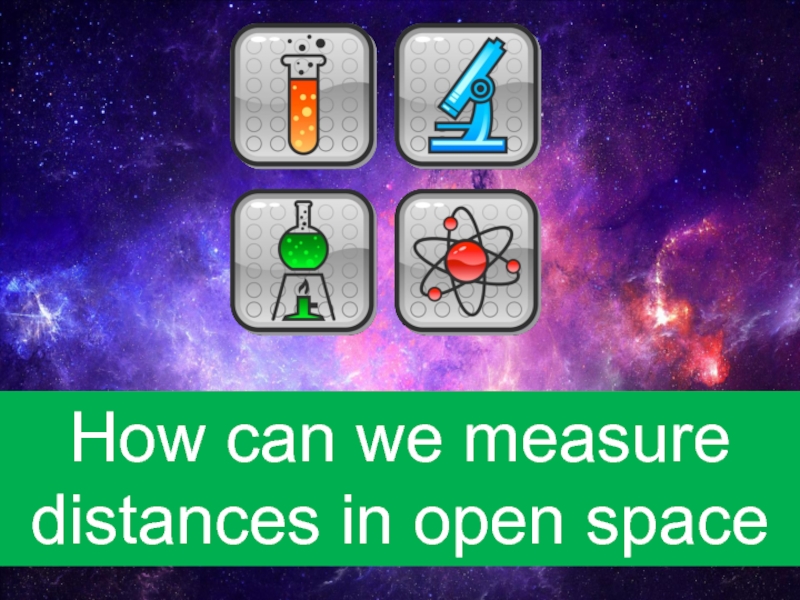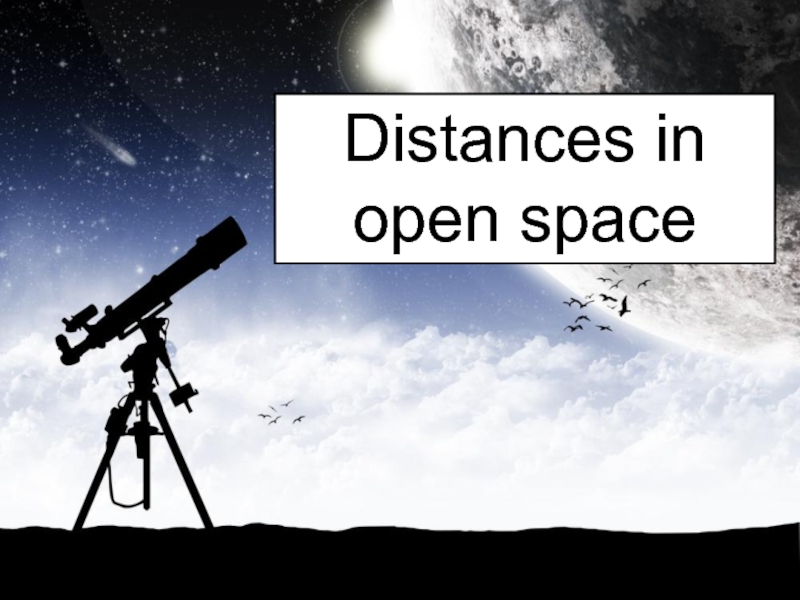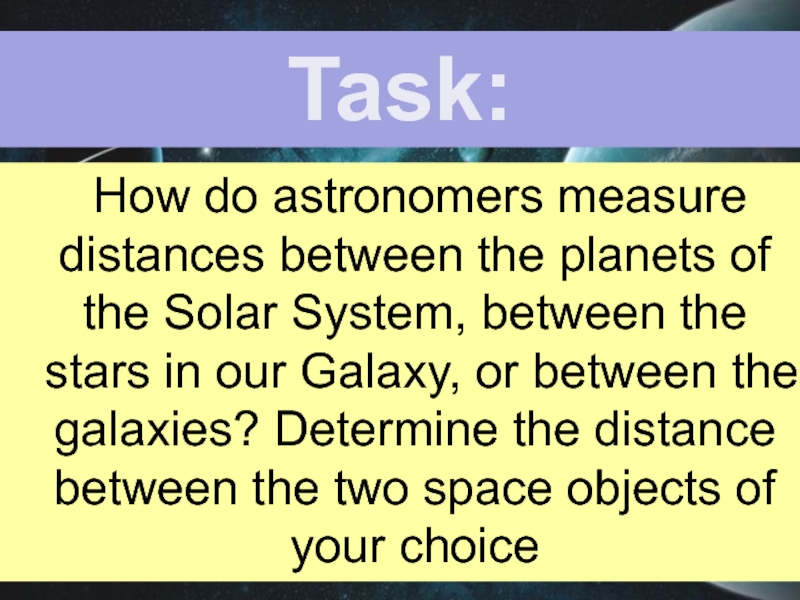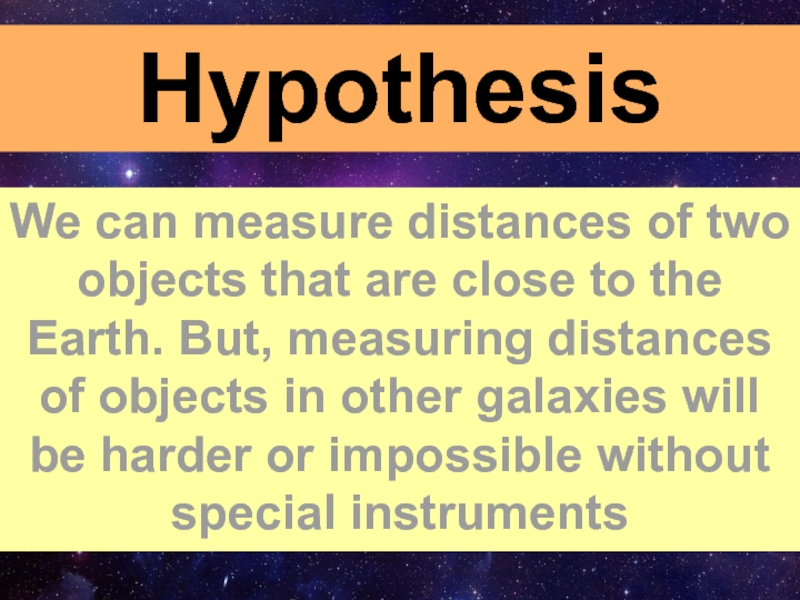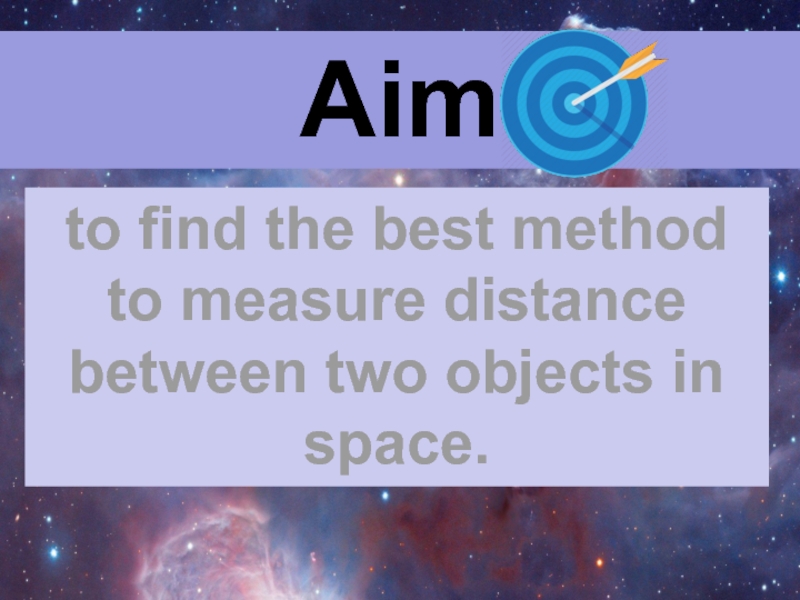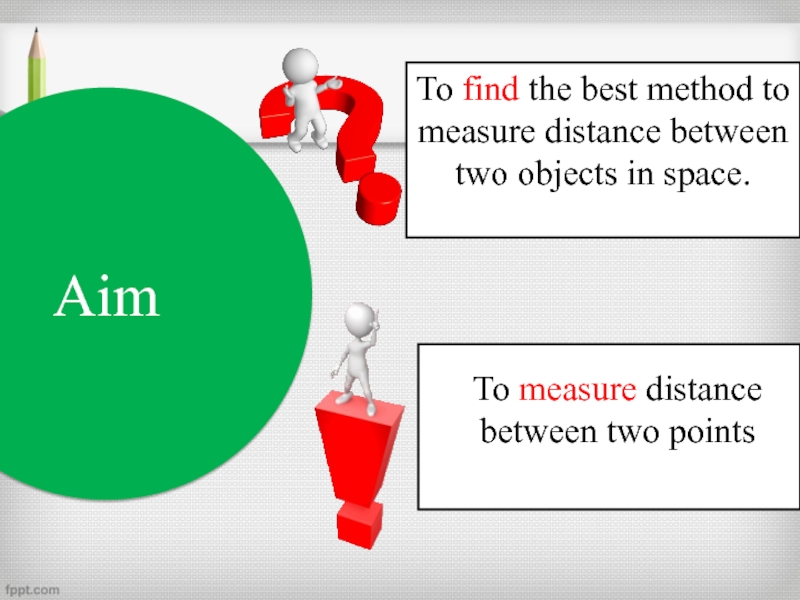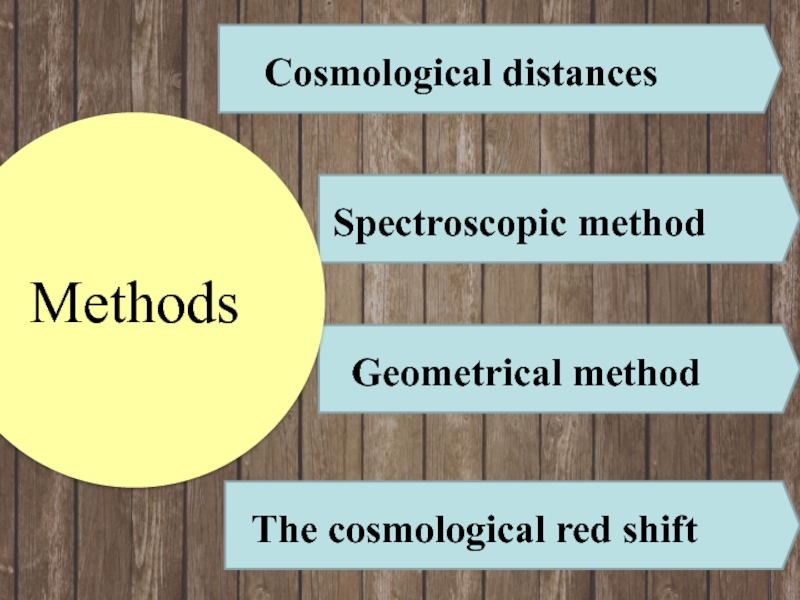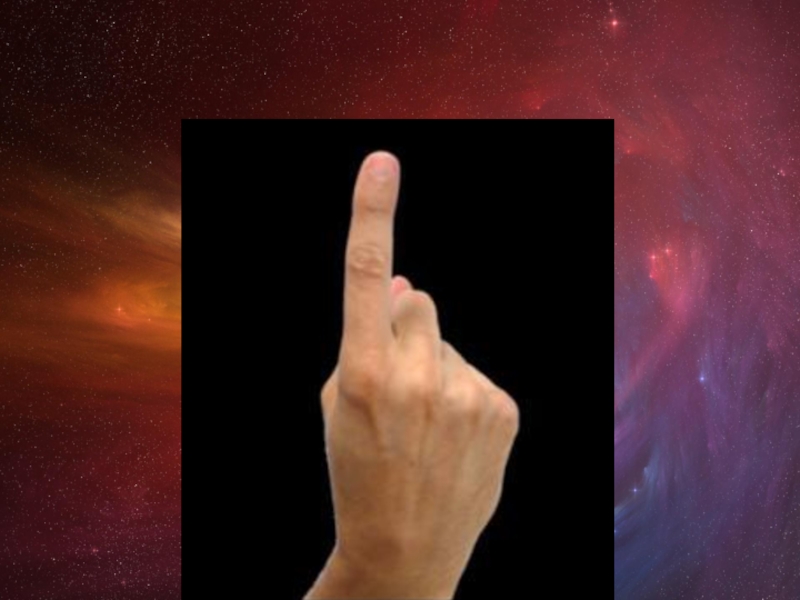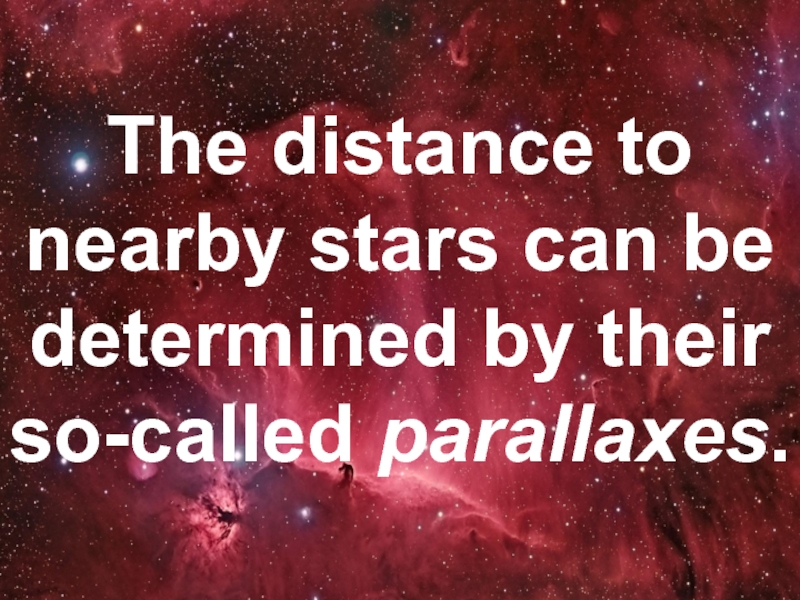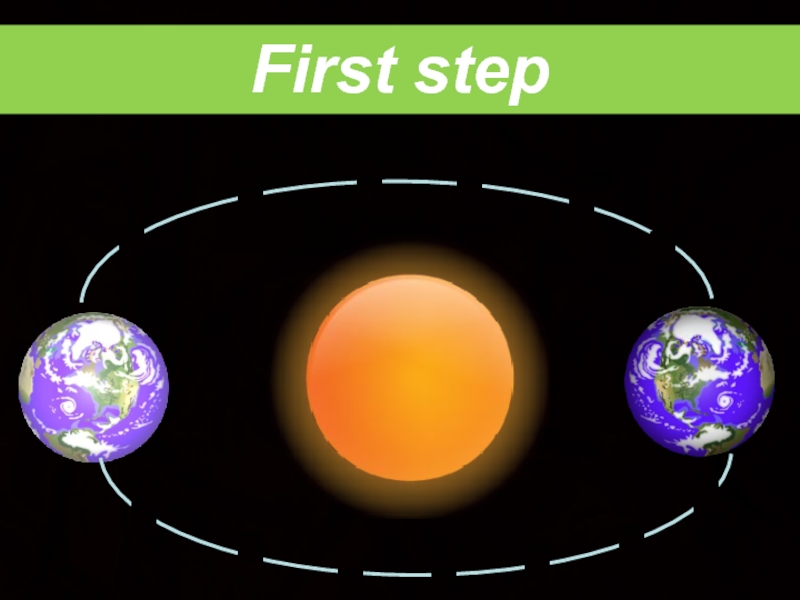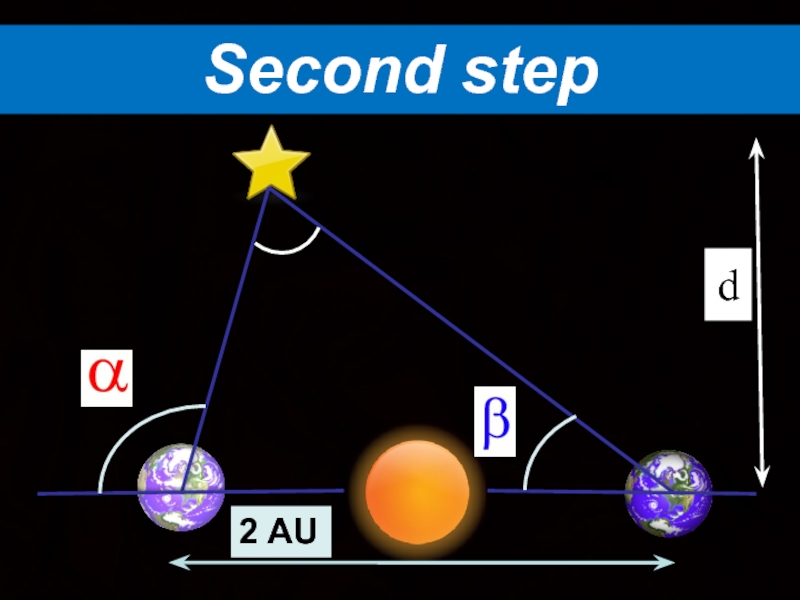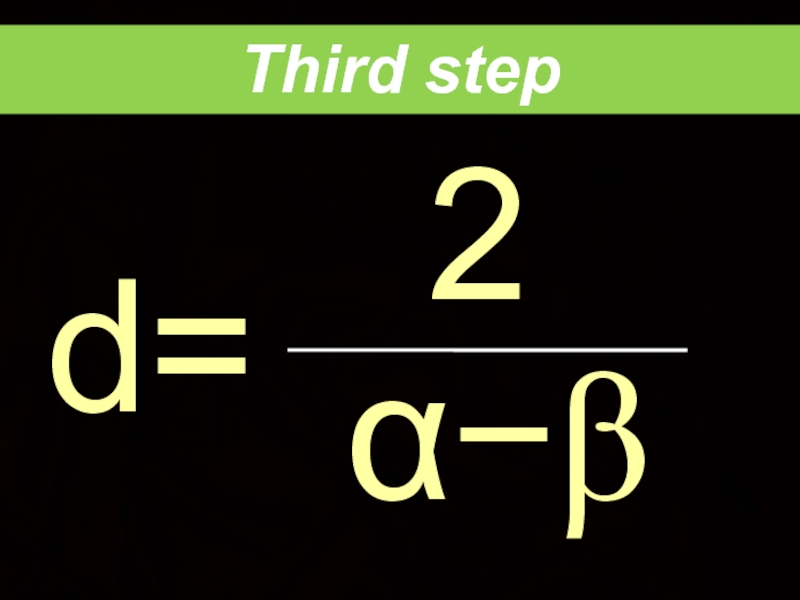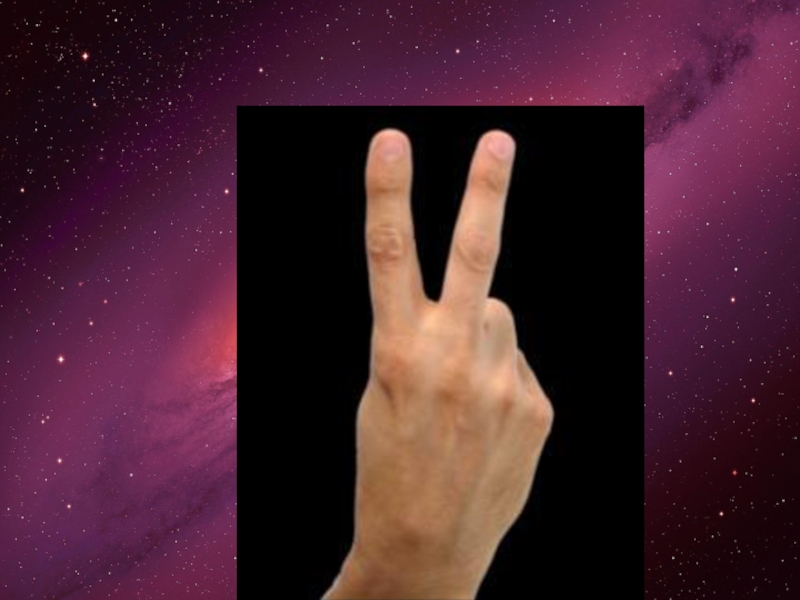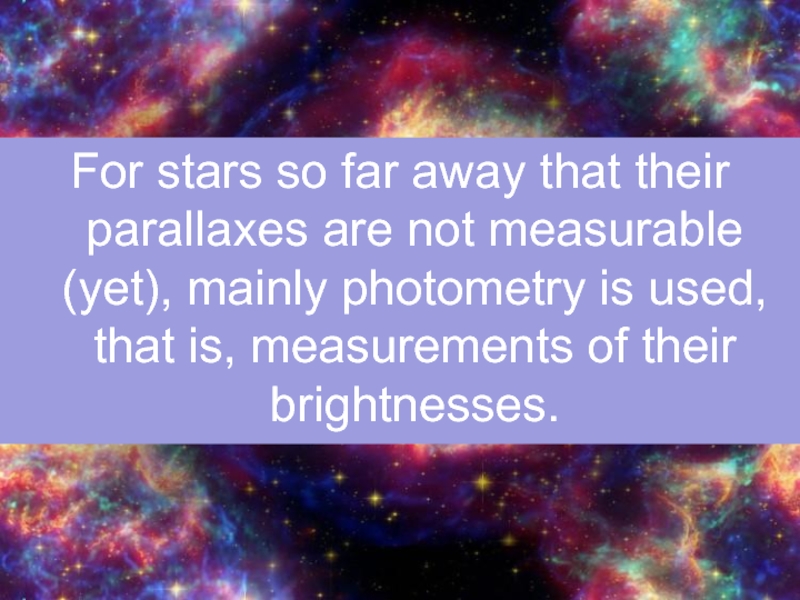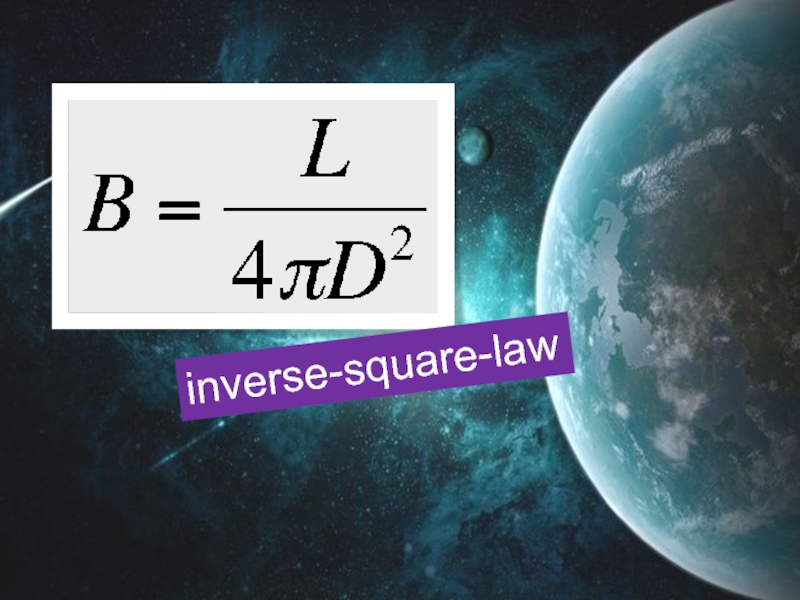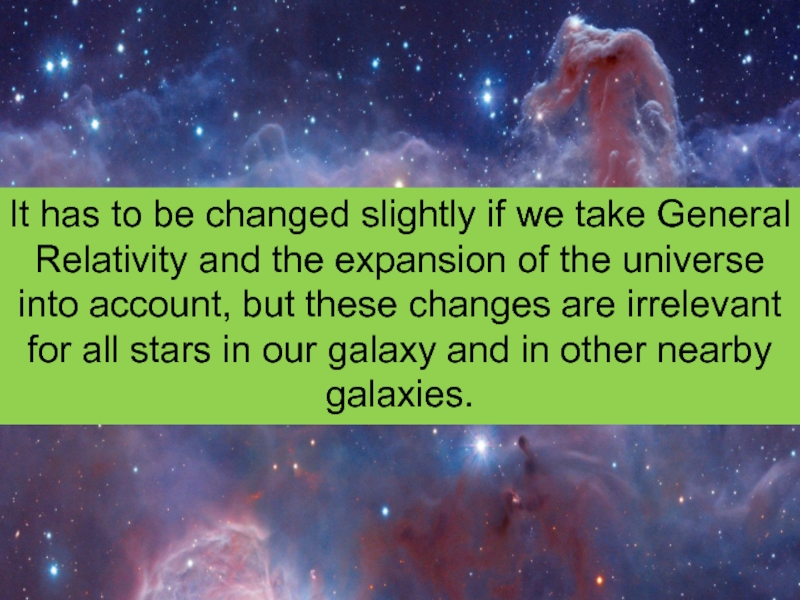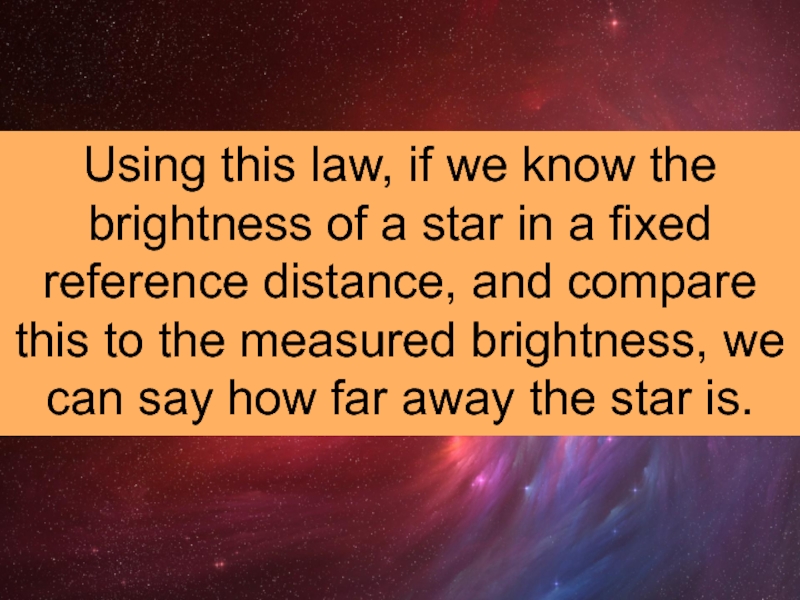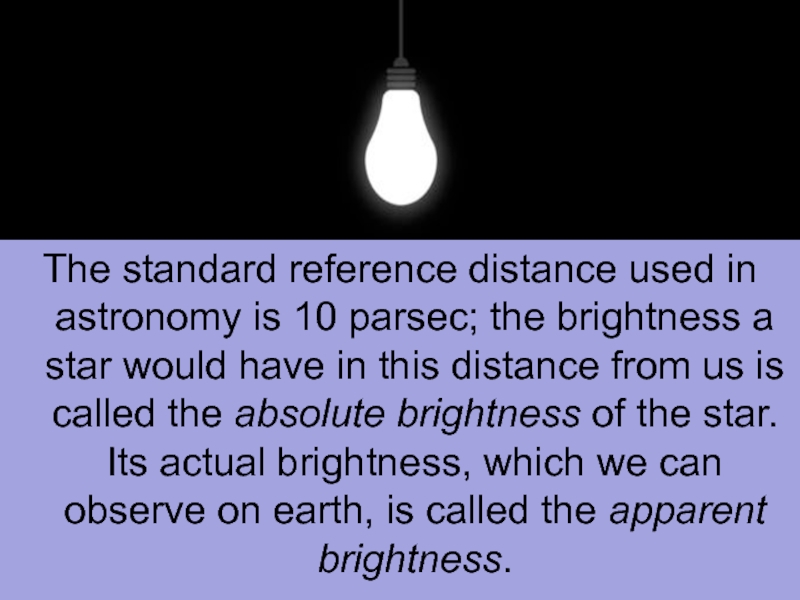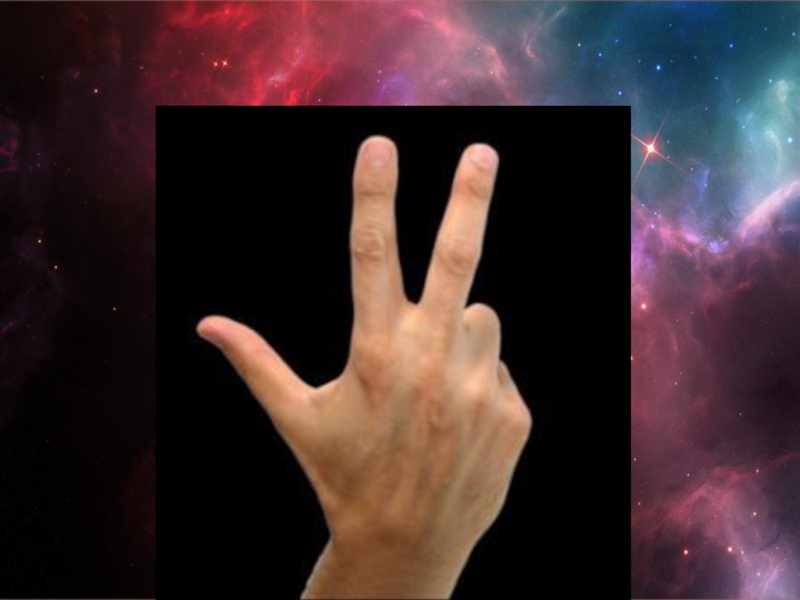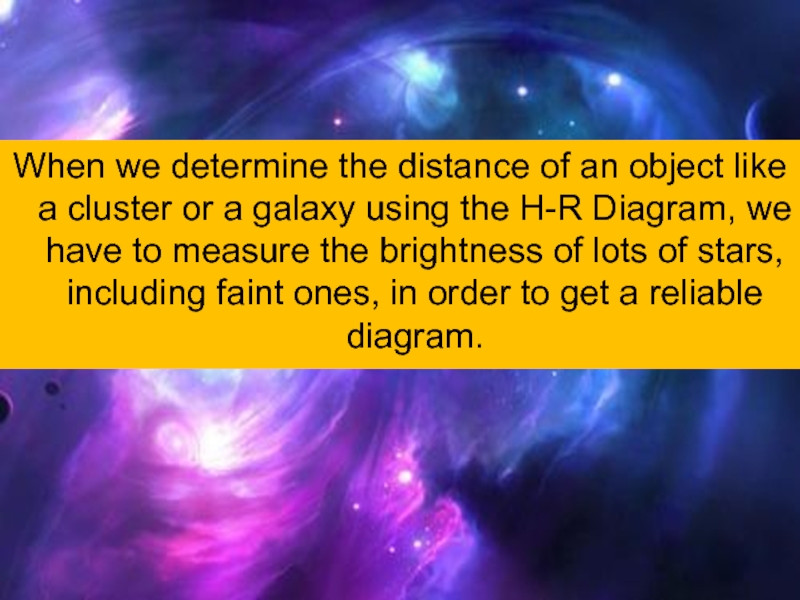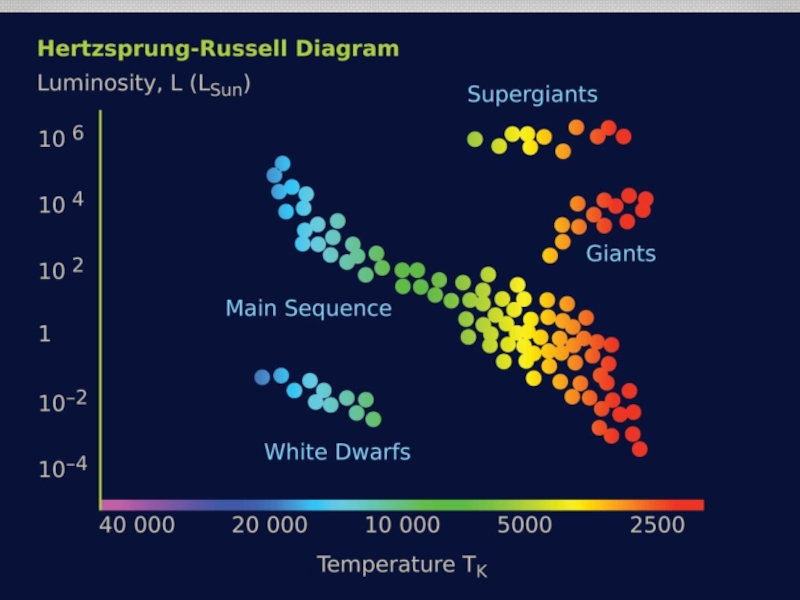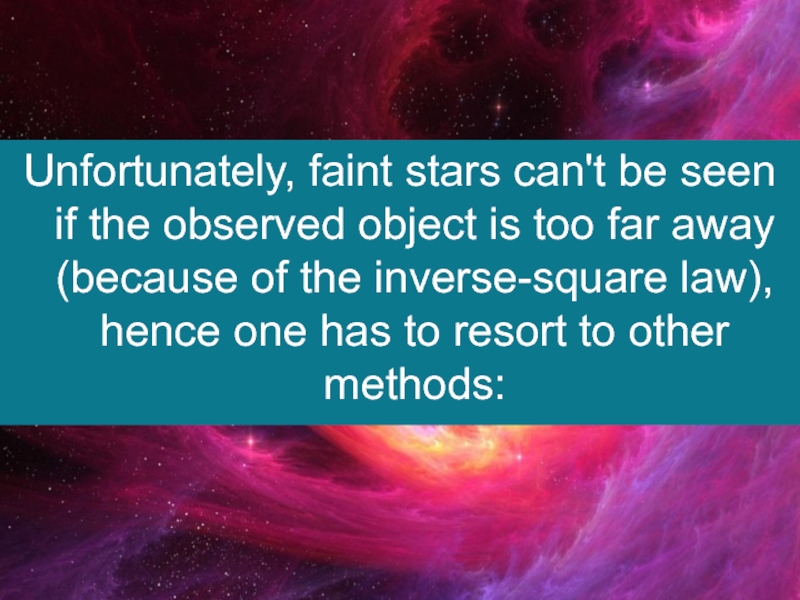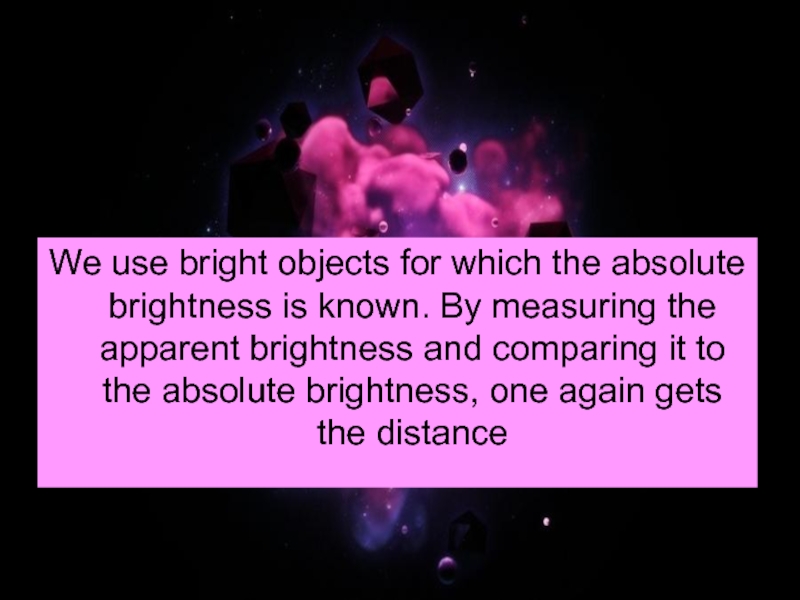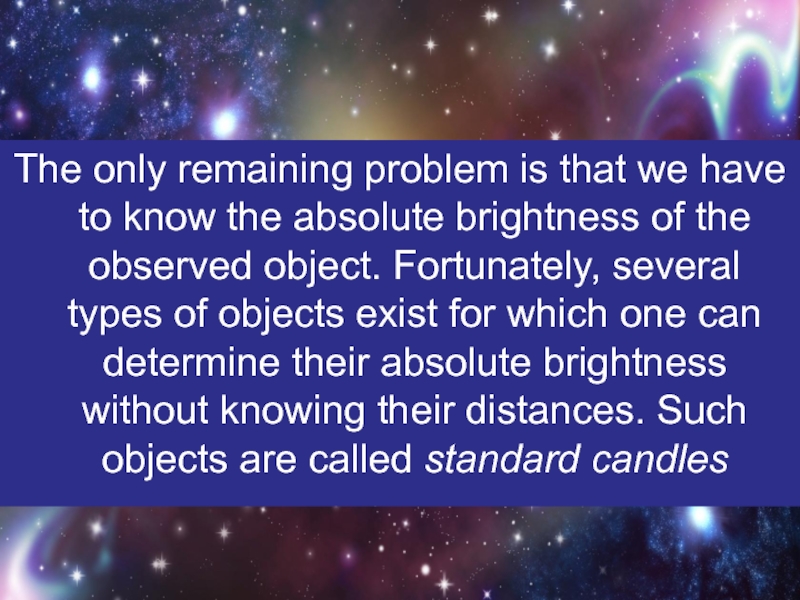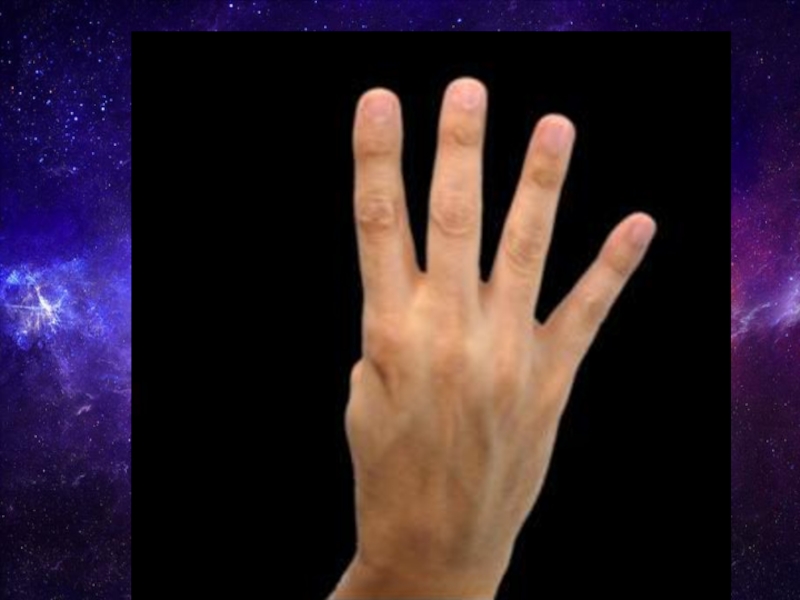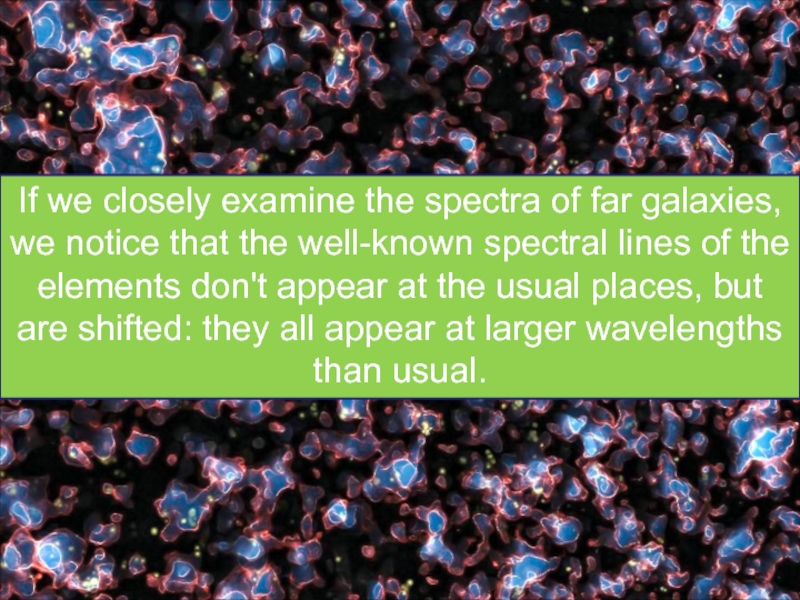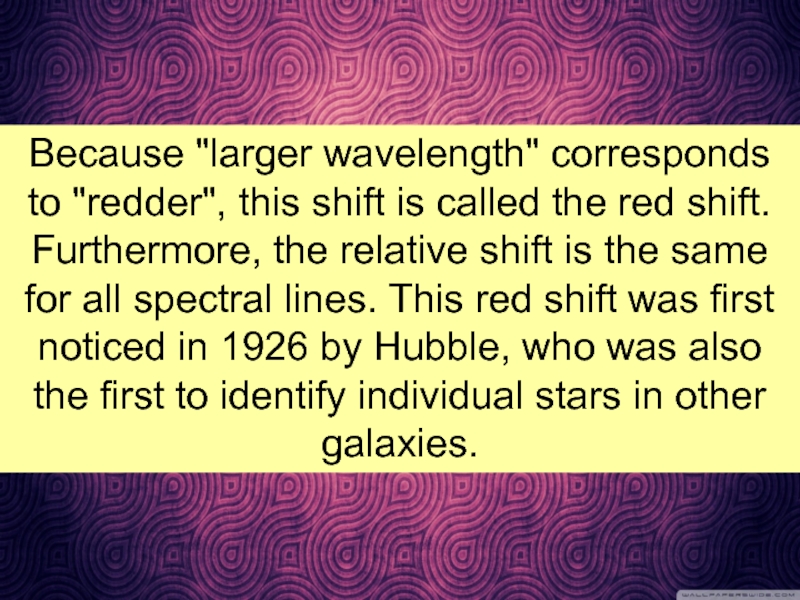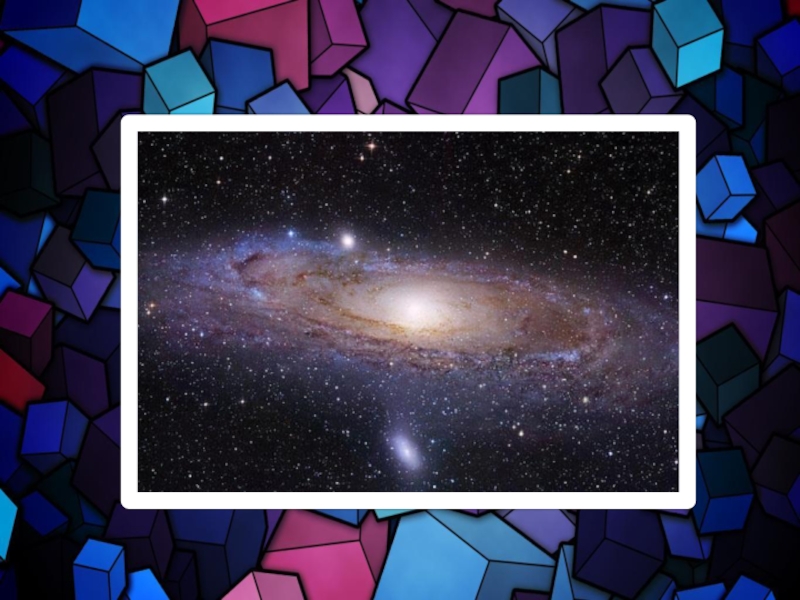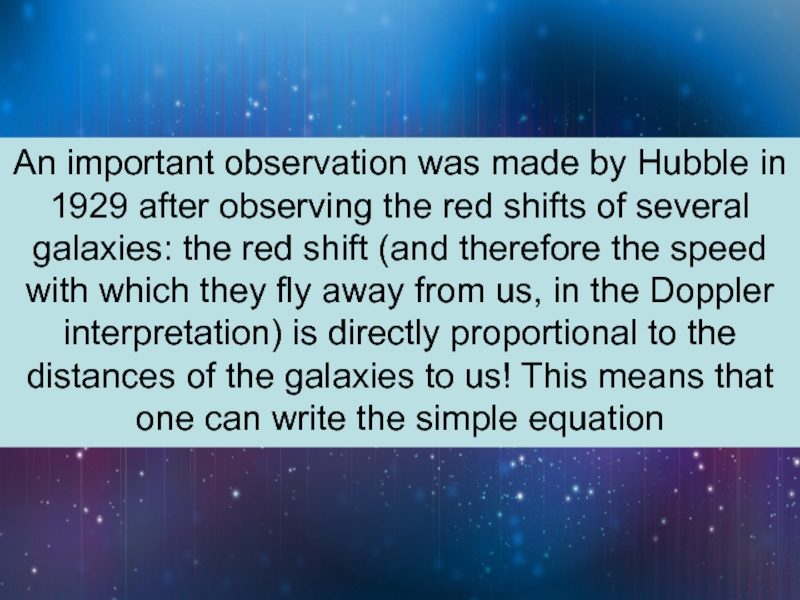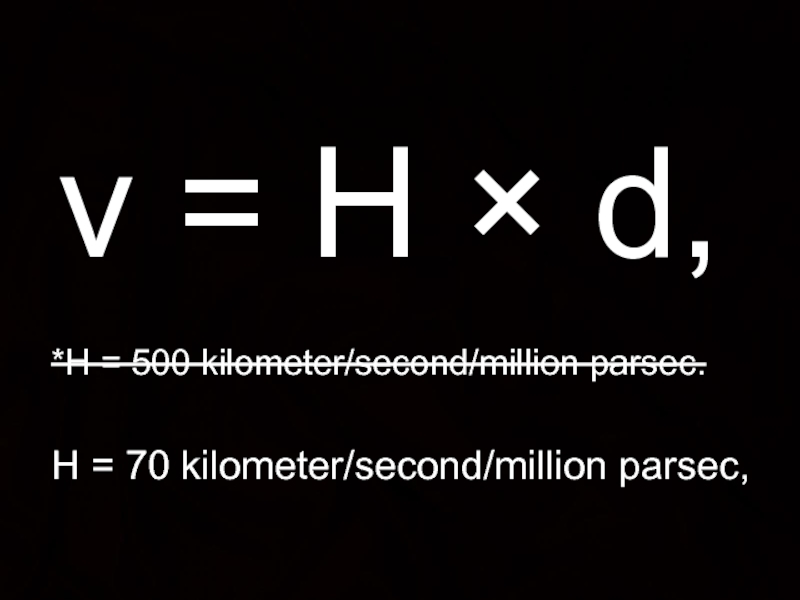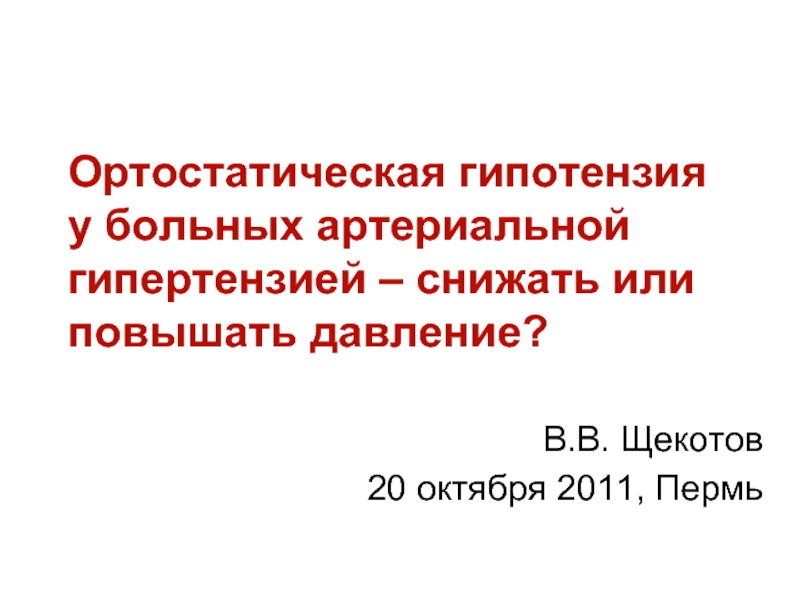- Главная
- Разное
- Дизайн
- Бизнес и предпринимательство
- Аналитика
- Образование
- Развлечения
- Красота и здоровье
- Финансы
- Государство
- Путешествия
- Спорт
- Недвижимость
- Армия
- Графика
- Культурология
- Еда и кулинария
- Лингвистика
- Английский язык
- Астрономия
- Алгебра
- Биология
- География
- Детские презентации
- Информатика
- История
- Литература
- Маркетинг
- Математика
- Медицина
- Менеджмент
- Музыка
- МХК
- Немецкий язык
- ОБЖ
- Обществознание
- Окружающий мир
- Педагогика
- Русский язык
- Технология
- Физика
- Философия
- Химия
- Шаблоны, картинки для презентаций
- Экология
- Экономика
- Юриспруденция
How can we measure distances in open space презентация
Содержание
- 1. How can we measure distances in open space
- 2. Distances in open space
- 3. How do astronomers measure distances
- 4. Hypothesis We can measure distances of two
- 5. Aim to find the best method to measure distance between two objects in space.
- 6. To find the best method
- 7. Methods Geometrical method Spectroscopic method Cosmological distances The cosmological red shift
- 9. The distance to nearby stars can be determined by their so-called parallaxes.
- 10. First step
- 11. Second step d 2 AU
- 12. Third step d= 2 α−β
- 14. For stars so far away that their
- 15. inverse-square-law
- 16. It has to be changed slightly if
- 17. Using this law, if we know
- 18. The standard reference distance used
- 20. When we determine the distance of an
- 22. Unfortunately, faint stars can't be seen if
- 23. We use bright objects for which the
- 24. The only remaining problem is
- 26. If we closely examine the spectra of
- 27. Because "larger wavelength" corresponds to "redder", this
- 29. An important observation was made by Hubble
- 30. v = H × d,
- 31. Thank you for your attention!
Слайд 3 How do astronomers measure distances between the planets of
the Solar System, between the stars in our Galaxy, or between the galaxies? Determine the distance between the two space objects of your choice
Task:
Слайд 4Hypothesis
We can measure distances of two objects that are close to
the Earth. But, measuring distances of objects in other galaxies will be harder or impossible without special instruments
Слайд 6
To find the best method to measure distance between two objects
in space.
To measure distance between two points
Aim
Слайд 7
Methods
Geometrical method
Spectroscopic method
Cosmological distances
The cosmological red shift
Слайд 14For stars so far away that their parallaxes are not measurable
(yet), mainly photometry is used, that is, measurements of their brightnesses.
Слайд 16It has to be changed slightly if we take General Relativity
and the expansion of the universe into account, but these changes are irrelevant for all stars in our galaxy and in other nearby galaxies.
Слайд 17
Using this law, if we know the brightness of a star
in a fixed reference distance, and compare this to the measured brightness, we can say how far away the star is.
Слайд 18
The standard reference distance used in astronomy is 10 parsec; the
brightness a star would have in this distance from us is called the absolute brightness of the star. Its actual brightness, which we can observe on earth, is called the apparent brightness.
Слайд 20When we determine the distance of an object like a cluster
or a galaxy using the H-R Diagram, we have to measure the brightness of lots of stars, including faint ones, in order to get a reliable diagram.
Слайд 22Unfortunately, faint stars can't be seen if the observed object is
too far away (because of the inverse-square law), hence one has to resort to other methods:
Слайд 23We use bright objects for which the absolute brightness is known.
By measuring the apparent brightness and comparing it to the absolute brightness, one again gets the distance
Слайд 24
The only remaining problem is that we have to know the
absolute brightness of the observed object. Fortunately, several types of objects exist for which one can determine their absolute brightness without knowing their distances. Such objects are called standard candles
Слайд 26If we closely examine the spectra of far galaxies, we notice
that the well-known spectral lines of the elements don't appear at the usual places, but are shifted: they all appear at larger wavelengths than usual.
Слайд 27Because "larger wavelength" corresponds to "redder", this shift is called the
red shift. Furthermore, the relative shift is the same for all spectral lines. This red shift was first noticed in 1926 by Hubble, who was also the first to identify individual stars in other galaxies.
Слайд 29An important observation was made by Hubble in 1929 after observing
the red shifts of several galaxies: the red shift (and therefore the speed with which they fly away from us, in the Doppler interpretation) is directly proportional to the distances of the galaxies to us! This means that one can write the simple equation
